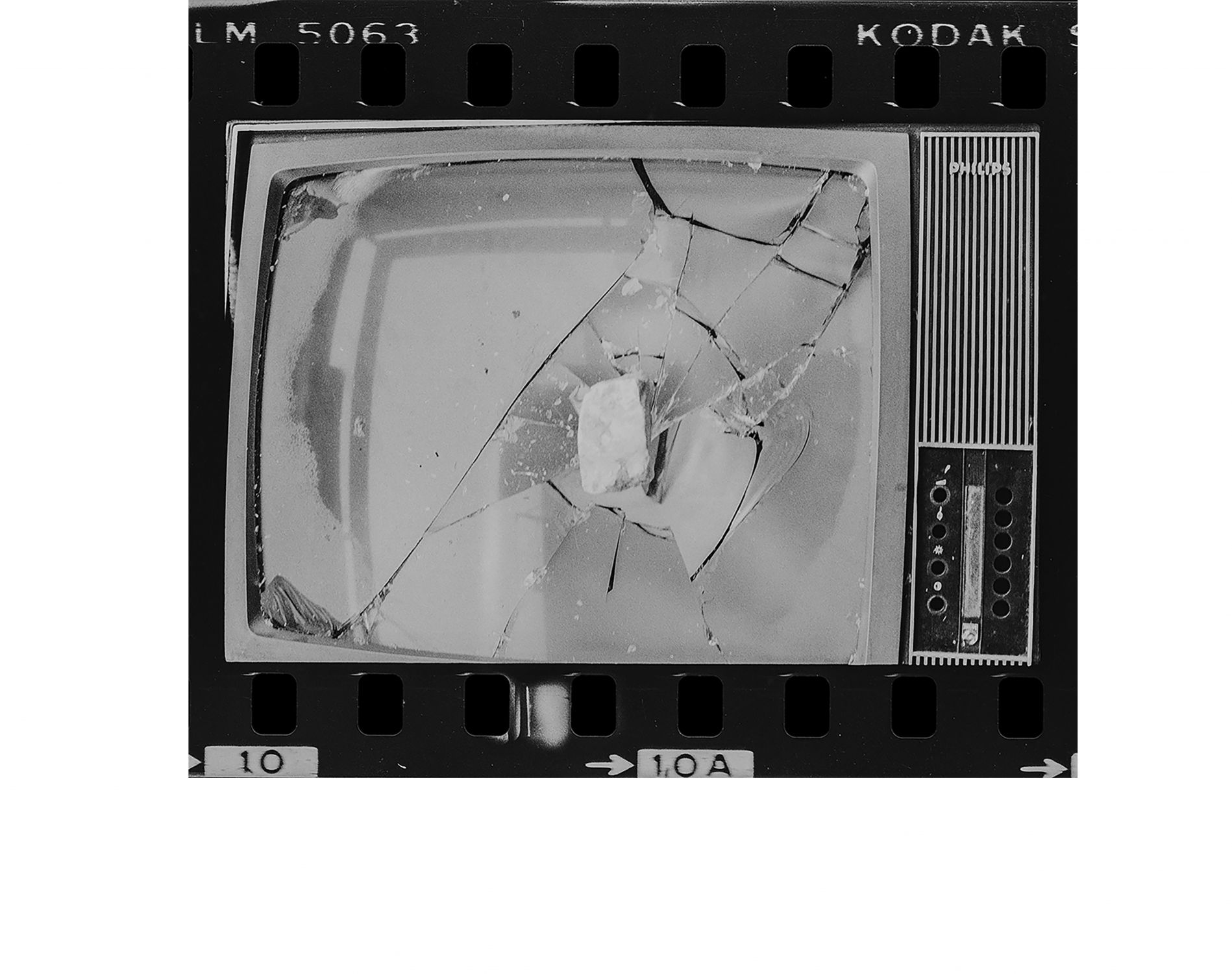The Powerful Art of Magic Soap
James Green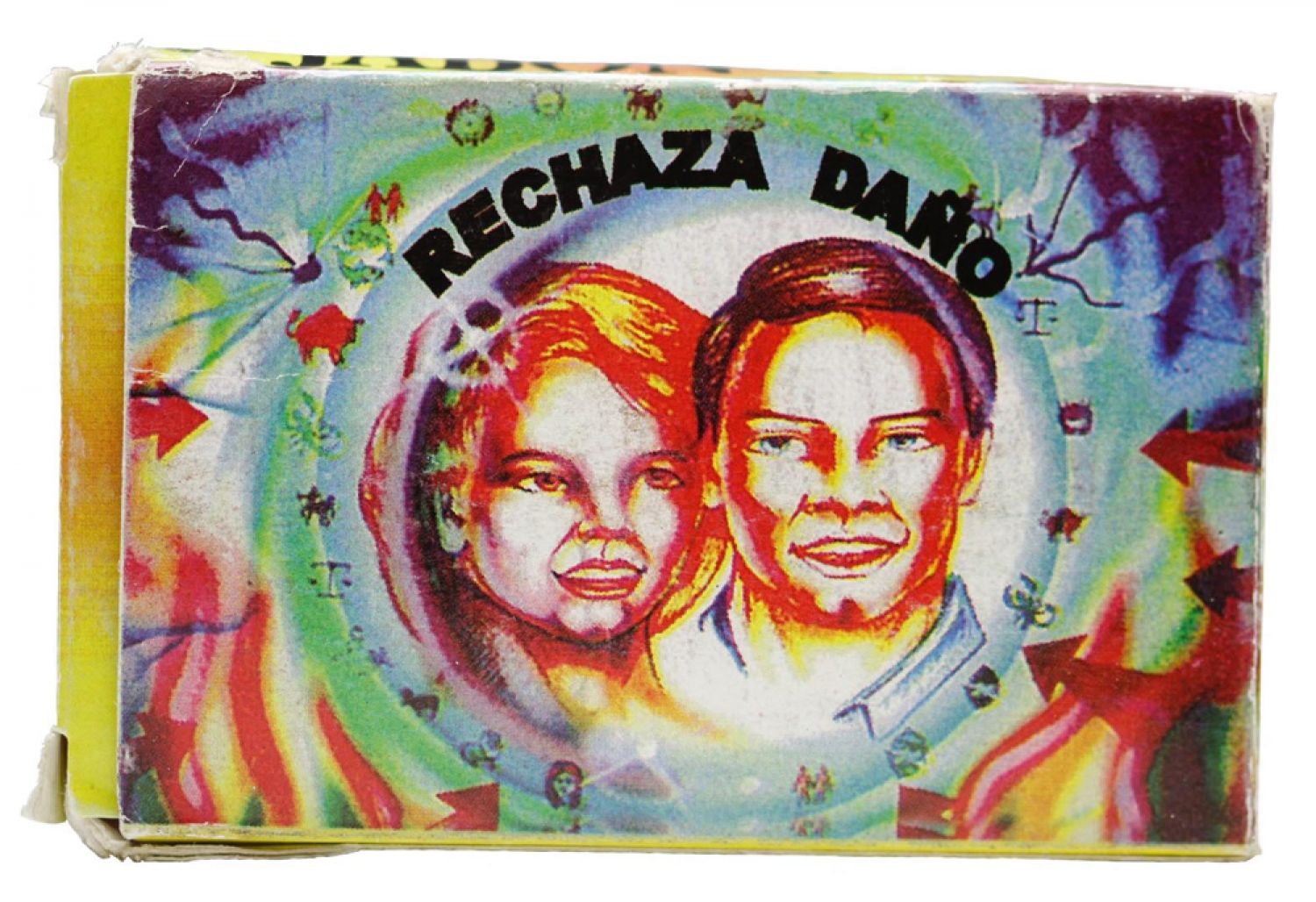
Magic Soaps are bars of soap that can bring fame and fortune, true love, spiritual wellbeing and material gain if they are used properly. They are sold at stalls known as Teindas Esotéricas that are related to the practice of magic in the city markets of Latin America. They are also available in Spain. The Magic Soaps discussed here have been collected over a five-year period in Ecuador, Colombia, Chile, Peru and Mexico to study them. This essay will introduce you to the powerful artwork associated with Magic Soap.
Magic Soap packages have a bewildering range of highly striking printed images. These images either indicate the effect the soap will have on the person who uses it or show a supernatural being whose power impregnates the soap to provide its effects. The first image shows a smiling couple surrounded by a protective bubble that deflects bad magic, bad wishes and the Evil Eye – this is the Reject Damage Magic Soap. Other Magic Soaps show people winning piles of money at the roulette, people attracting crowds of clients to their business, others falling in love with their perfect partner – all positive results. There are Magic Soaps that produce more sinister outcomes; Mouth Cover Soap (Figure 2) shows a woman who has had her mouth gagged probably to counteract malicious gossip while Disunion Soap can be used by jealous people who would like to bring an end to someone else’s happy relationship (Figure 3). These scenes are usually set in everyday contemporary surroundings and show the common ideals that many people wish to achieve in life.
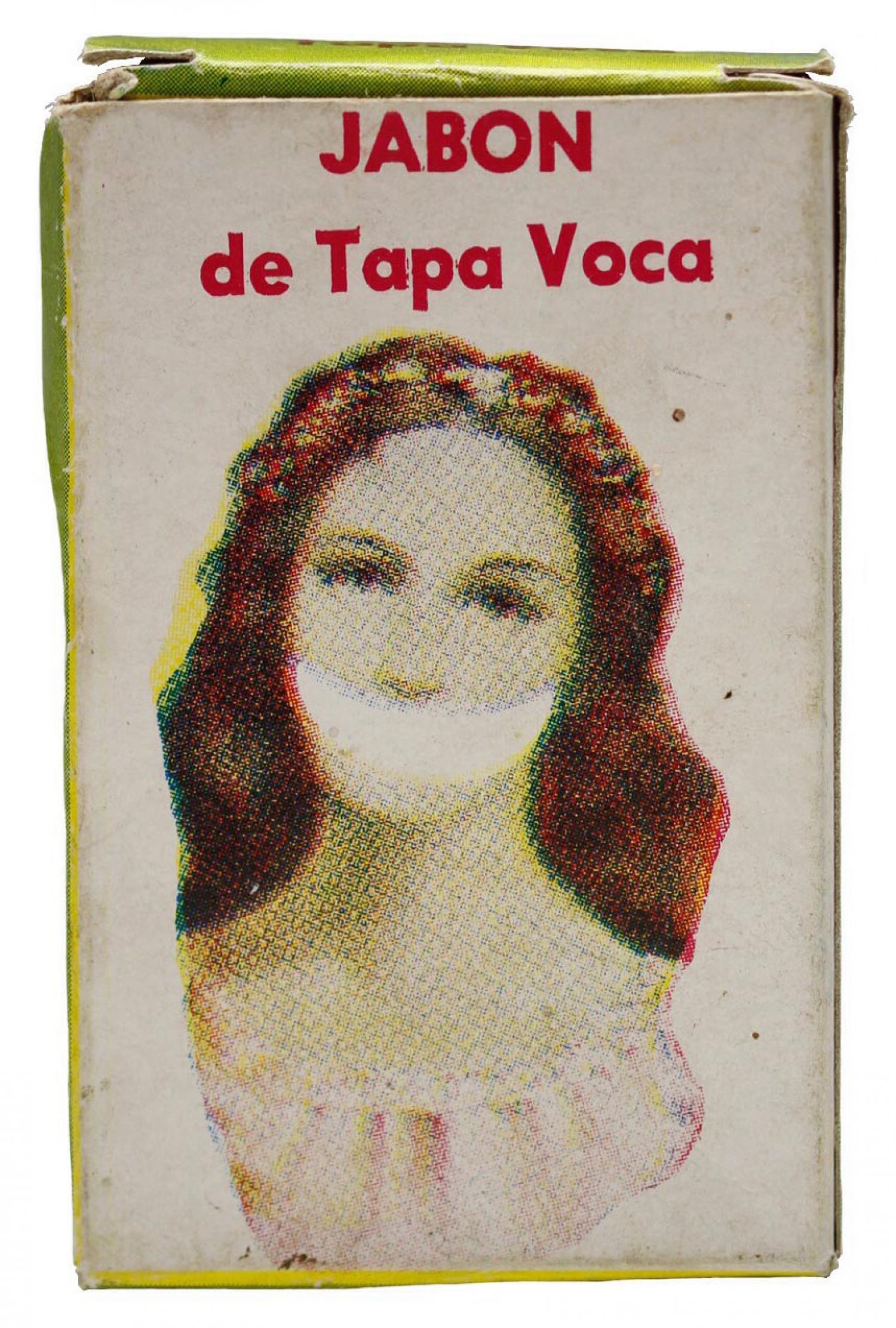
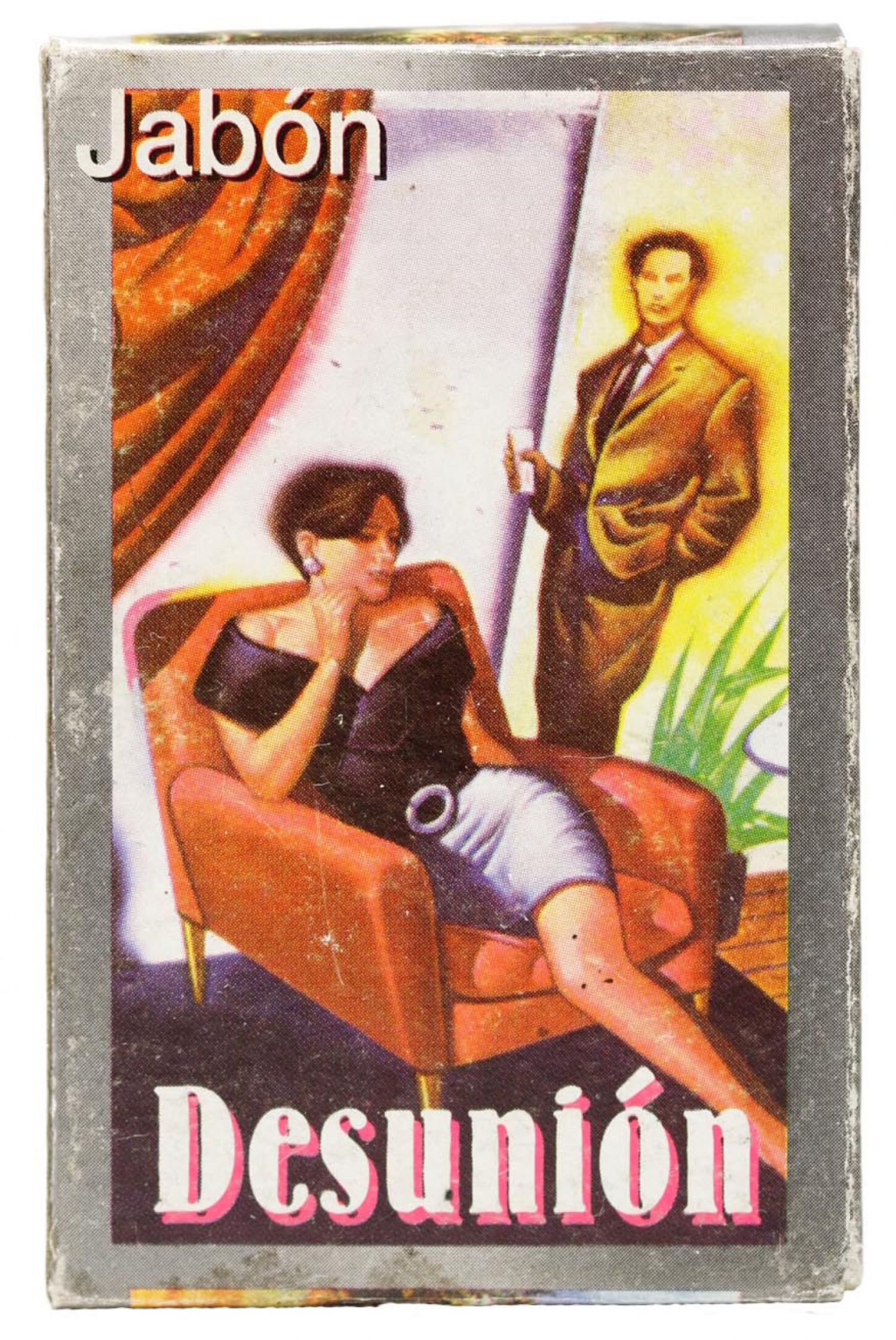
Then there are the Magic Soaps that draw upon the power of special supernatural figures; gods from a range of established religions around the world, demons, saints, folk saints, sacred animals and powerful objects. Powerful Hand Soap has a scene from Heaven on its box. Jesus’ giant hand rises out of a cloud with a gaping wound in its palm and on each finger tip stands a saint – this Magic Soap draws on the power of Jesus and the stigmata (Figure 4). Santa Muerte (Saint Death) Soap draws on the power of Santa Muerte, who is a very popular folk saint in Mexico City where shrines of her can be found, particularly in the area surrounding the Mercado Sonora (commonly known as The Witches Market). In this example (Figure 5.) Santa Muerte wears a red robe indicating that the soap should be used for purposes of love.
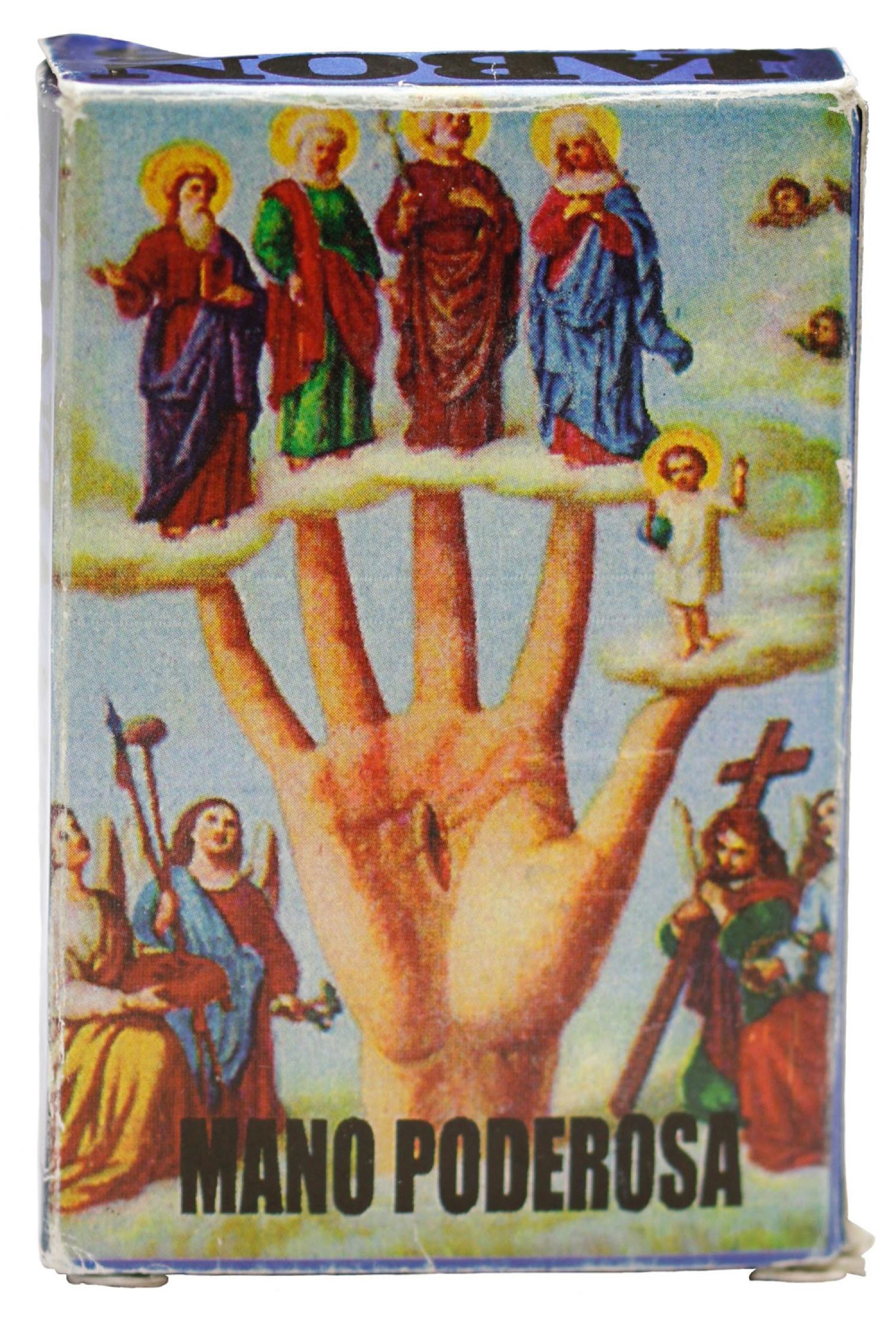
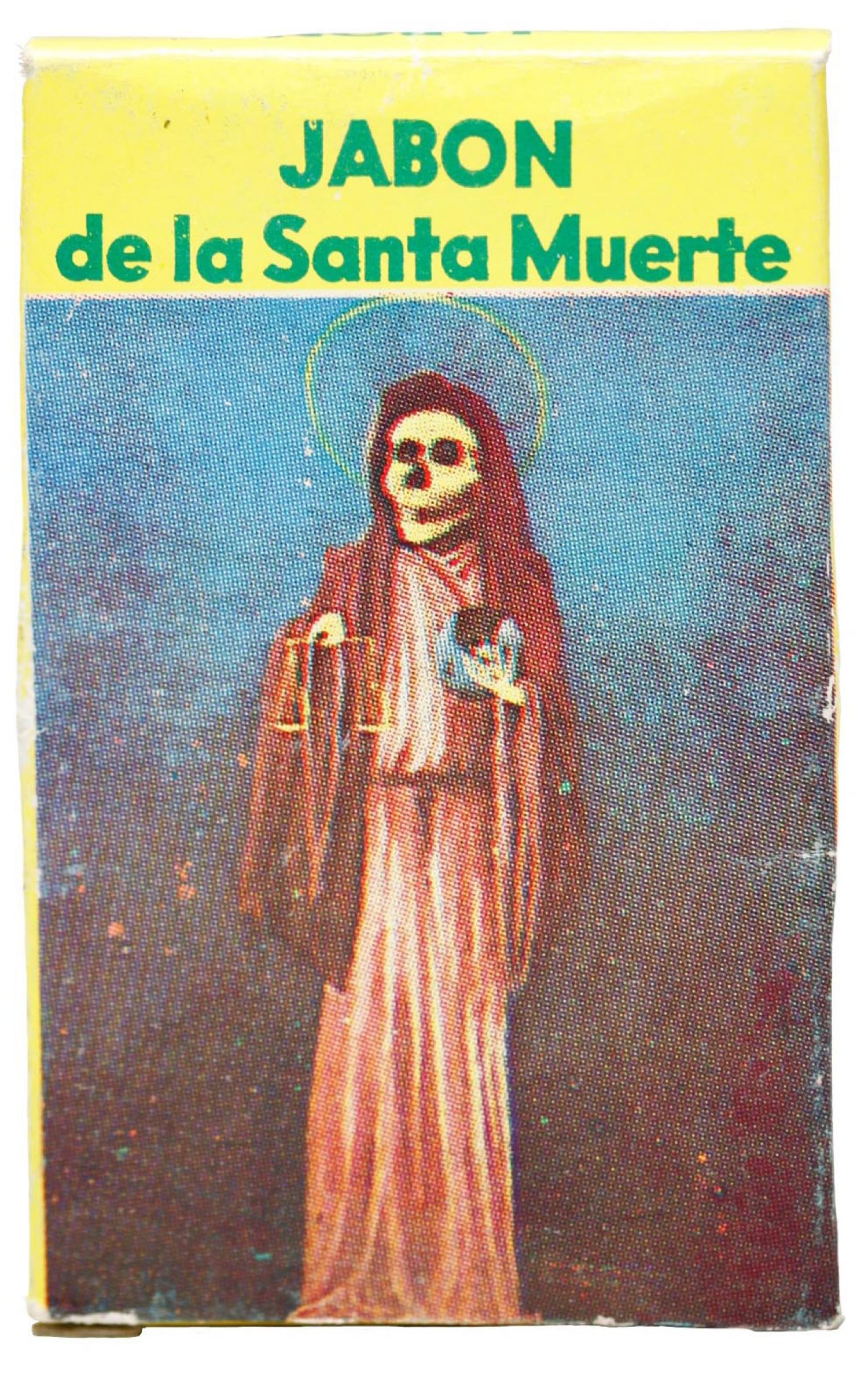
Magic has been practiced since the beginning of humankind around the world as a way of dealing with supernatural forces to bring about desired ends, such as a successful harvest or the ability to control the weather, for example[1]. Magic Soap functions by means of sympathetic magic, a form of magic in which symbols or pictures of the intended outcome are used to carry out the spell[2]. We can understand this from a Mexican graphic designer who was asked to refresh some of the older existing images, however the Magic Soap producer then decided to continue using the traditional images as their customer base identified with them[3]. When I was at the Mercado de 30 de Julio in Bogotá, I sat inside a Magic Stall and observed a mother and daughter arguing over the best Magic Soap that would bring good luck in love. They were looking for the correct image that corresponded to the daughter’s particular needs. Indeed, the image on the packaging is a very important aspect of Magic Soap. The practice of magic is very common in cities[4] and the markets in Quito, Mexico City, Bogotá, Santiago, Lima and Chiclayo have witches’ stalls where Magic Soap is stocked together with other items used for magic purposes, such as herbs and plants, potions, animal skulls and powders (Figure 6).
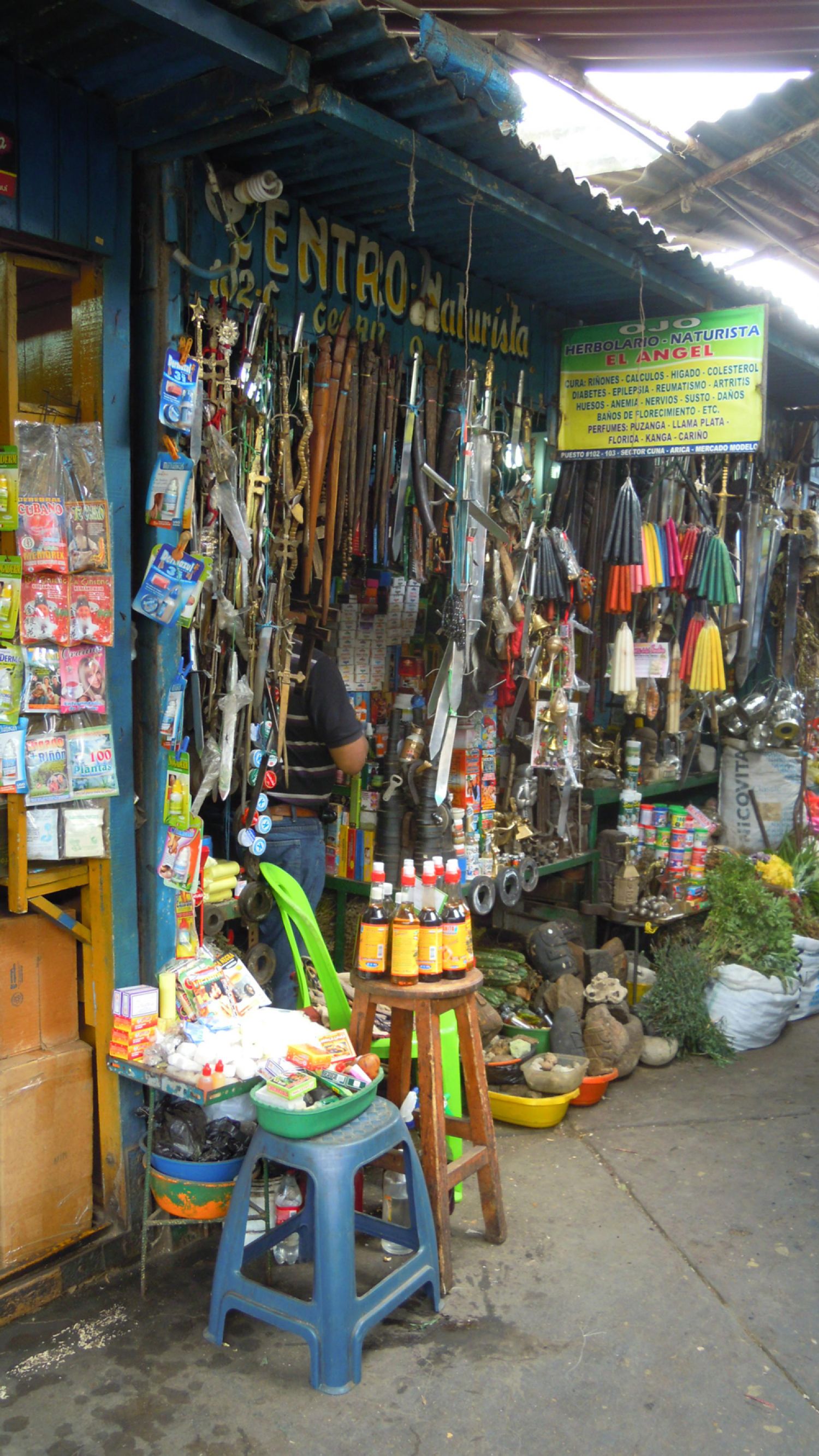
The fact that Magic Soap is produced both in Latin American countries and Spain suggests that it was developed from European witchcraft, which travelled to Mexico and later Peru during the Spanish Conquest in the sixteenth century[5]. We know that, before the Conquest, Indigenous shamans practiced magic to cure people. However, these practices were either suppressed or merged with Spanish beliefs and modern Magic Soap may have its roots in Catholic practices such as Baptism and anointing with Holy Water. Now, we can see printed on the boxes of Magic Soap gods and other supernatural figures not only from the Aztec, Inca and European pantheons, but also from around the world (Figures 7 – 10).
So, the next time you are in the shower, be sure to check the soap you are using. It might be Magic Soap and you may be washing yourself with supernatural forces.
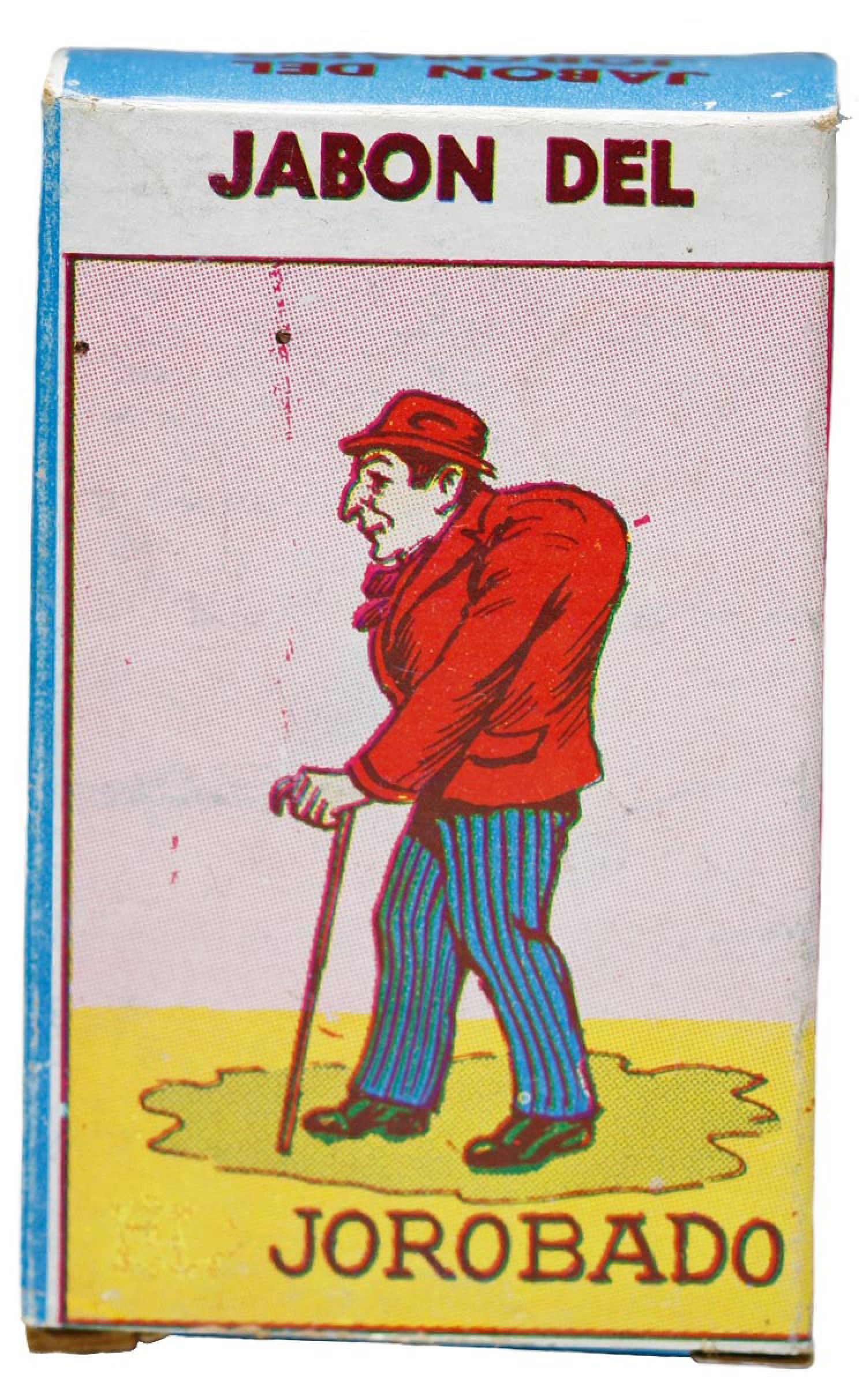
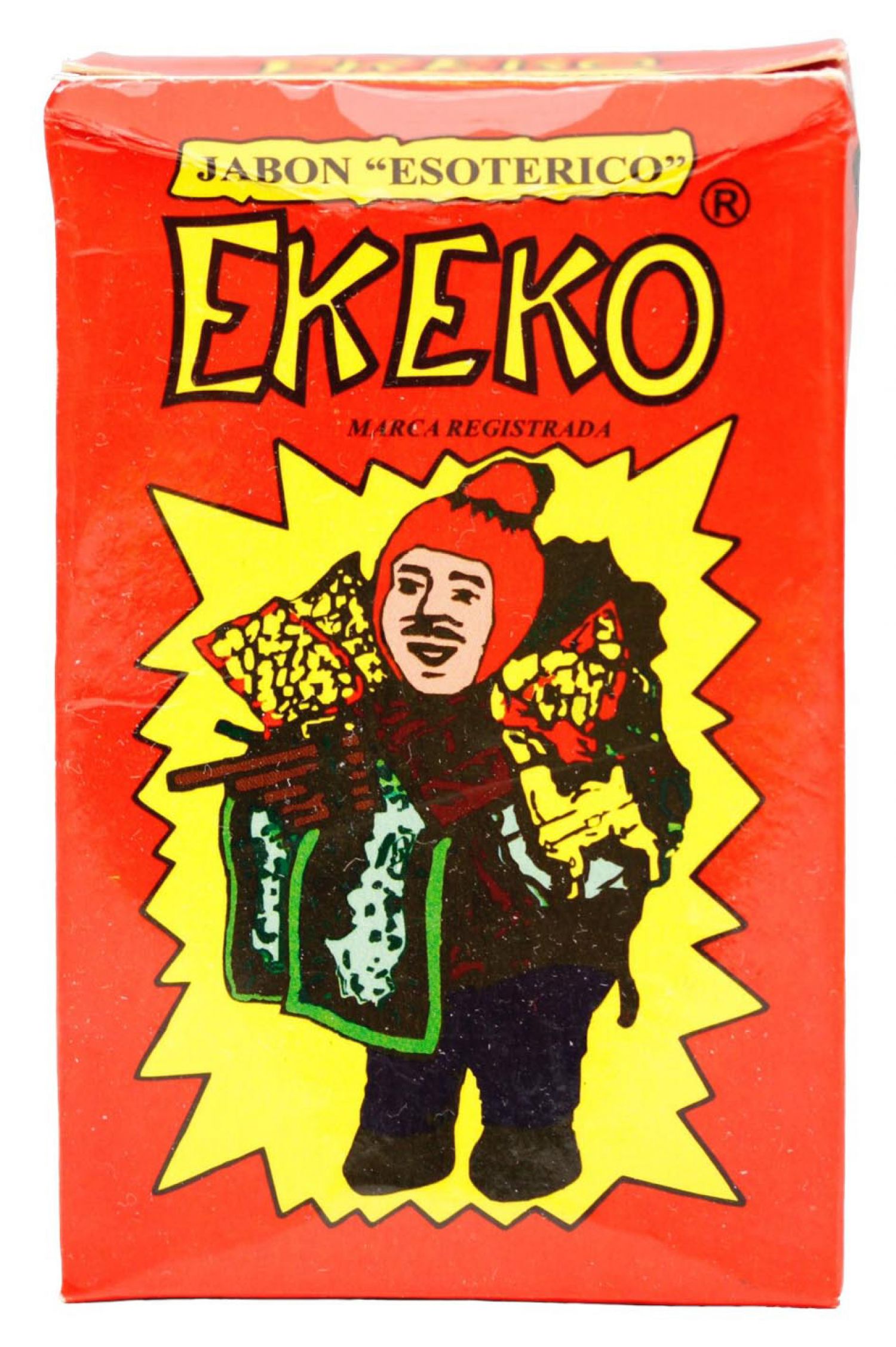
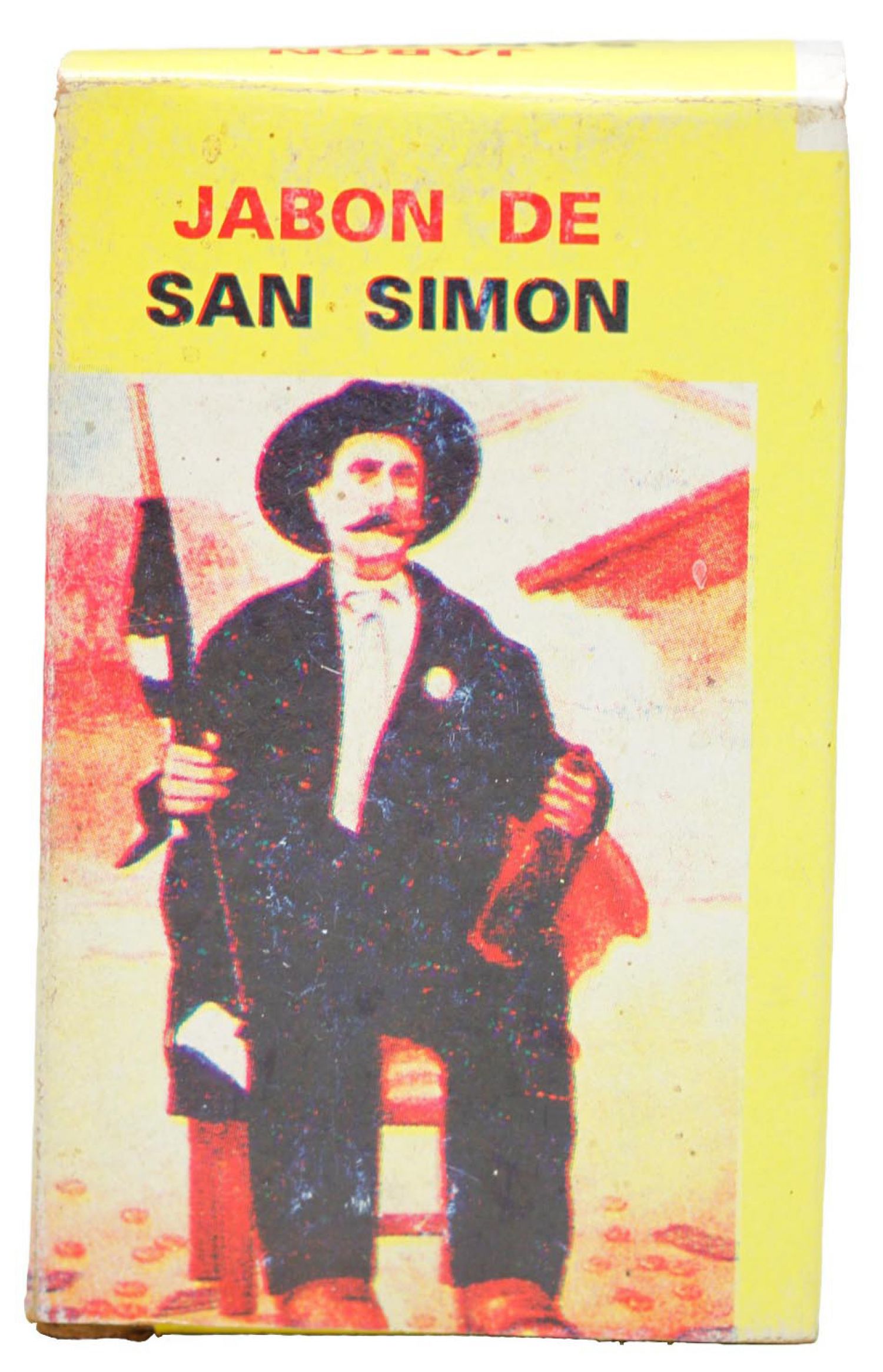
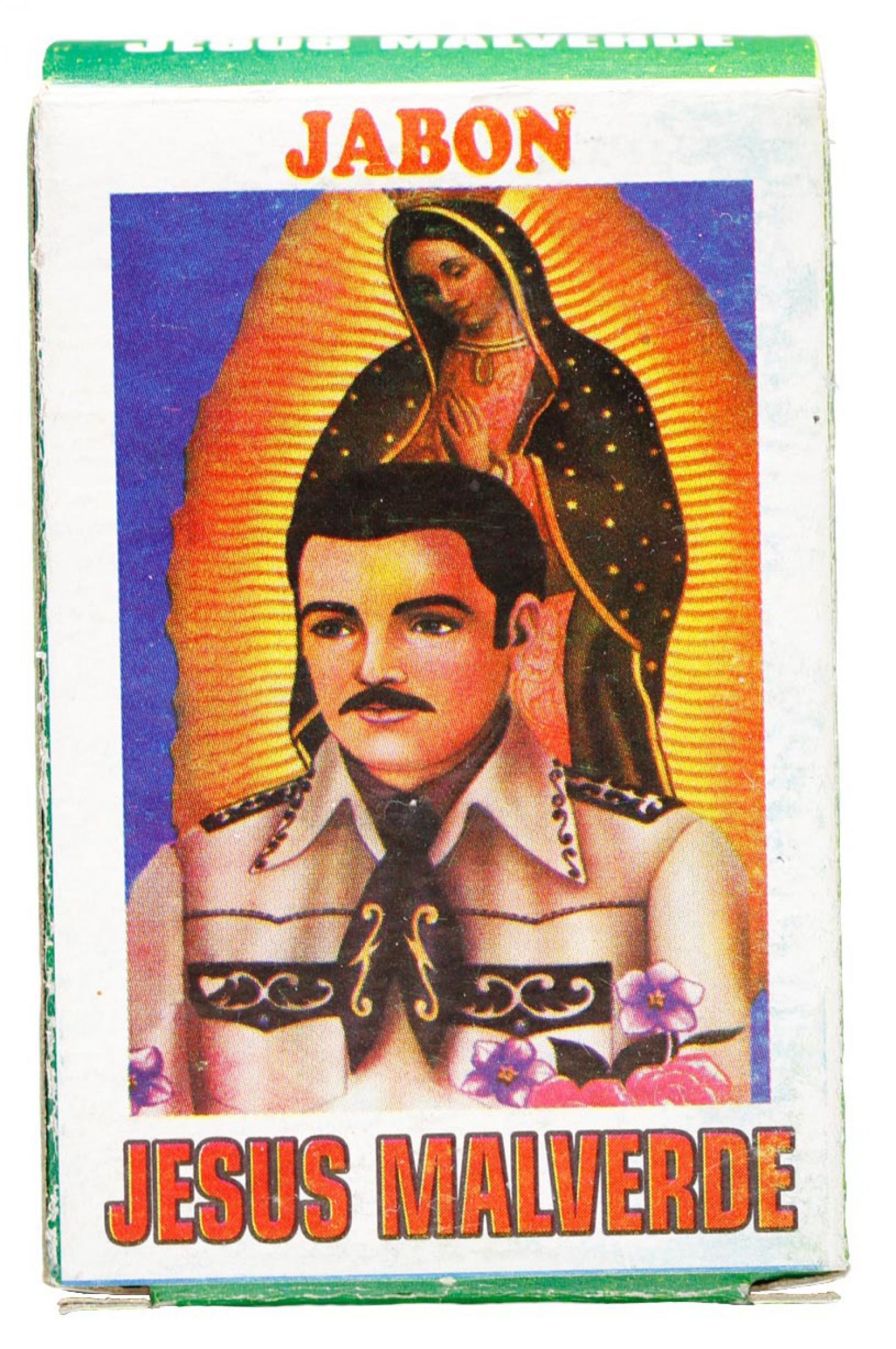
Footnotes
- ^ BRAIN, James L. (nd). «An Anthropological Perspective on the Witchcraze» [sic], published in The Politics of Gender in Early and Modern Europe. Sixteenth Century, Journal Publishers, Kirksville: 15-27.
- ^ LEHMANN, Arthur C. & James Myers (1985). Magic, Witchcraft, and Religion: An Anthropological Study of the Supernatural. California, Mayfield Publishing Company: 252.
- ^ http://lmndsxtrn.blogspot.com/2014/06/politicos-infames-y-jabones.html
- ^ CHESNUT, Andrew R. (2012). Devoted to Death: Santa Muerte the Skeleton Saint. Oxford University Press: 116.
- ^ HEMMING, John (1971). The Conquest of The Incas. London, Book Club Associates; GAREIS, Iris (2006). Encyclopedia of Witchcraft: The Western Tradition. Santa Barbara, California and «Merging Magical Traditions: Sorcery and Witchcraft in Spanish and Portuguese America», in LEVACK, Brian P. (2014). The Oxford Handbook of Witchcraft in Early Modern Europe and Colonial America. Oxford, Oxford University Press: 412; TOWNSEND, Richard F. (2000). The Aztecs. London, Thames & Hudson.
